 Palo Alto Stanford Heritage
Palo Alto Stanford Heritage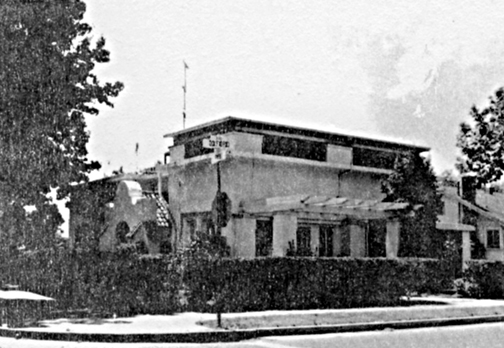 |
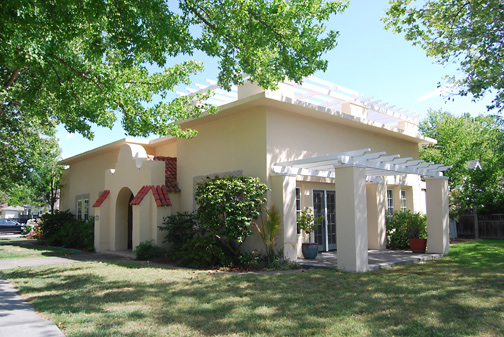 |
| Inventory photo | Photo taken May 31, 2009 |
The following is from the Historic Buildings Inventory as revised in 1986:
This reinforced concrete house which is a free adaptation of Mission Revival devices and forms. An inventive building, both structurally and visually, in its original state the roof area was developed as a trellised terrace that, since the date of the Inventory, has been re-created. A red tile roof covers the entry porch. Some of the recessed windows feature criss-cross iron detailing. This house was built to demonstrate fire and earthquake resistant features as well as to show that handsome and regionally popular architectural qualities were compatible with concrete.
This house is important architecturally as an impressive attempt to expand the possibilities of the Mission Revival style, and significant technologically in its use of reinforced concrete for a residential structure. A published description also called attention to the use of mosaic tile as an ornamental feature. It originally was built as a promotional device for the San Francisco Concrete Construction Co., which was seeking clients and investors, and the San Francisco Bulletin, which offered it as first prize in a subscription contest conducted in the first half of 1909. Large display advertisements portrayed it in line drawings (including the first floor plan) and extolled its design, durability, and convenience.
It also was described and pictured in 1912 in the Concrete House and Its Construction (Philadelphia, Assn. of American Portland Cement Manufacturers, 1912, pages 18, 135 and illustrations at page 18 and Figure 86) on the residential usage of reinforced concrete. The contest winner was Miss Patricia O'Hair, of San Francisco. She collected subscriptions equal to the value of 375 two-year subscription, or about half the proclaimed retail value of the house ($7,000). Miss O'Hair used the house as rental property until 1918; directories show tenants of short duration.
It then passed through several hands, including R. D. Shimer (Realtor), Mary G. Carr of Tulare (1919 to 1923) and T. B. Thompson (1923), before being purchased by Paulina and Willis Hills. Hills was a former newspaper publisher from Iowa, and the Hills occupied the house until the late 1920s. Before they left, however, they sold it to Mrs. Minerva Halliday in 1926.
Mrs. Halliday, born in Jackson, Mississippi a few months before the Emancipation Proclamation in 1863, came to Palo Alto about 1918. When she died in 1941 her survivors included four sons, a daughter, 17 grandchildren, and seven great-grandchildren. During the time she owned the house, occupants included herself, her daughter, Helen Wright, and Rev. J. F. Smith, head of the Methodist Episcopal Zion Church in Palo Alto, among others. She deeded the house to her daughter, Helen Wright in 1934 who sold it to Calvin Arrington in 1942. He was the owner at the date of the Inventory. Mrs. Wright was a housemaid and cook employed by, among others, the Wilson family (see 860 University Avenue). Her husband, Frank, was a barber.
Second prize in the Bulletin subscription contest of 1909 was also a concrete house designed by Mitchell and built by Bosworth in Half Moon Bay. It evidently pleased E. A. Crothers, owner of the Bulletin, for in 1910 he had Bosworth build a house of the same design but twice as large at 1705 El Camino Real (demolished). It was lavishly fitted inside with oak and mahogany, marble, and ornamental sculpture and moldings by O. S. Sarsi of San Francisco. The Bulletin announced its value at $15,000 when it was to be placed on the market. However, Crothers kept the house (although he himself did not occupy it) until 1926. It then was sold to Mrs. Halliday at the time she purchased the house at 2110 Park Boulevard. Mrs. Halliday also deeded it to her daughter, Helen, in April 1941, a few days before Mrs. Halliday's death. It was demolished in 1957.
A deplorable instance of racial attitudes emerged in connection with the two houses. Six months after Mrs. Halliday's death, most of the Evergreen Park property owners signed a covenant against occupation of their property by persons—except servants—not of the white race.
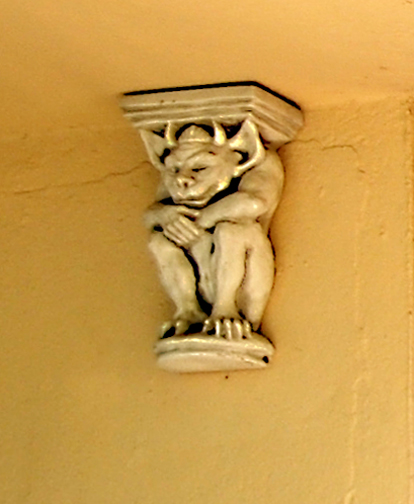 |
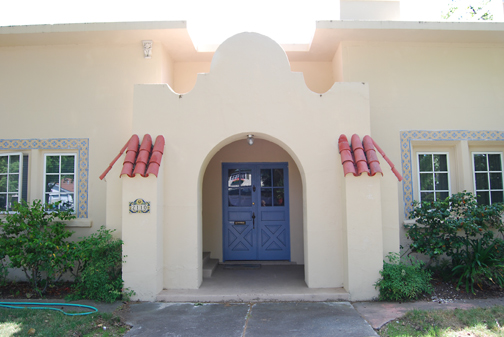 Creature at left is located under left overhang. |
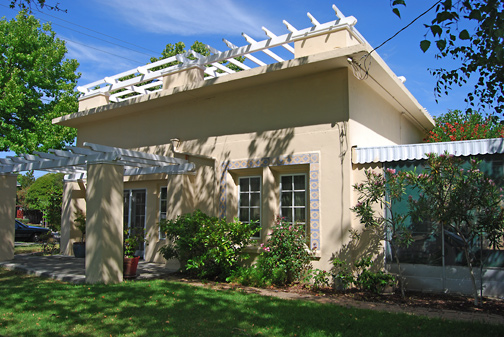 |
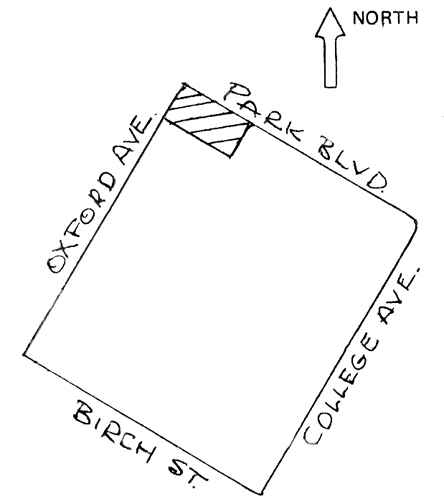 |
| Patterned tile window surround. | Location map |
The owners (2009) shared the following information about their home with PAST at the 2009 Centennial Plaque presentation:
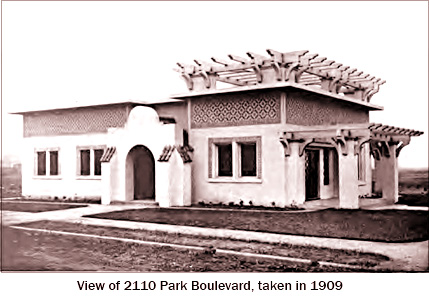 |
 |
| The historic photo dates from when the house was just completed in 1909. It was taken from a book on concrete techniques titled The Concrete House and its Construction. Compare this with the photos taken May 31, 2009. The most significant difference is that the original mosaic concrete tile which was on the upper half of the house is no longer present. The owners believe that some of it was removed, and some was just covered in stucco. Why, or when, is a mystery. They have some pieces of what appears to be from the upper mosaic tile that was found around the house. It is a unfired colored concrete tile similar to what still surrounds the house windows. |
|
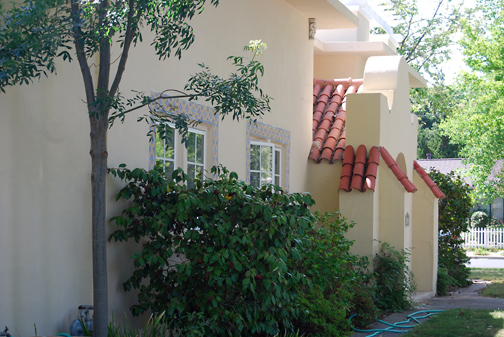 |
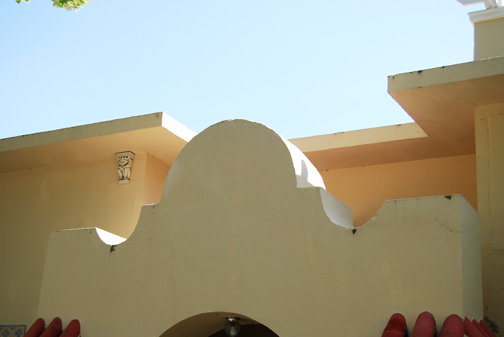 |
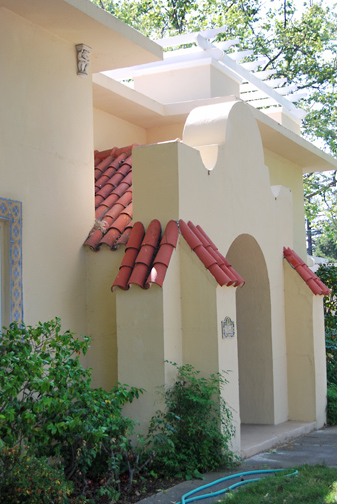 |
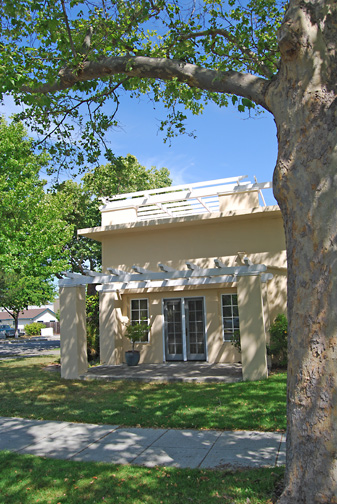 |
 |
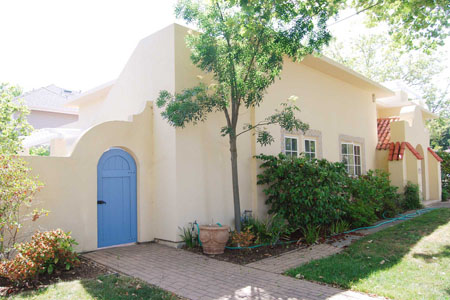 |
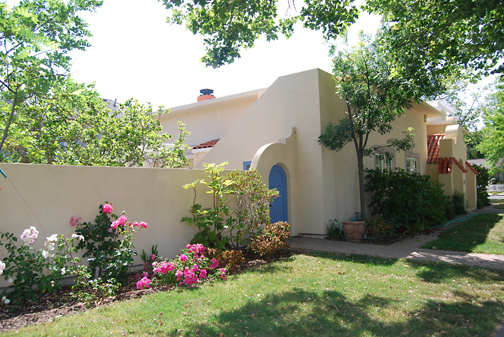 |
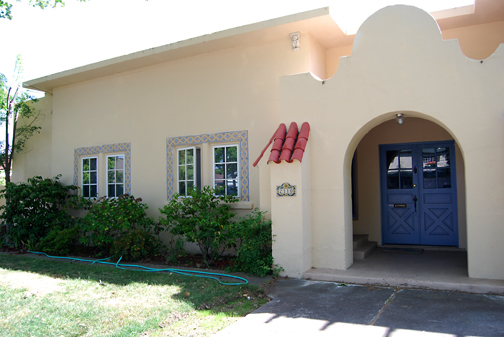 |
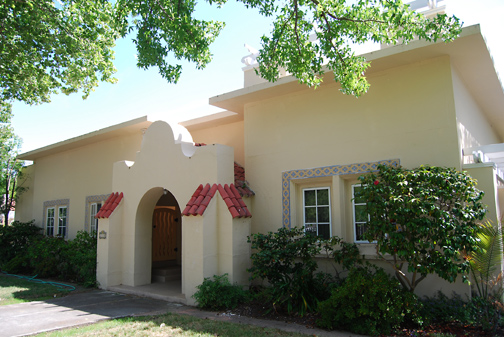 |
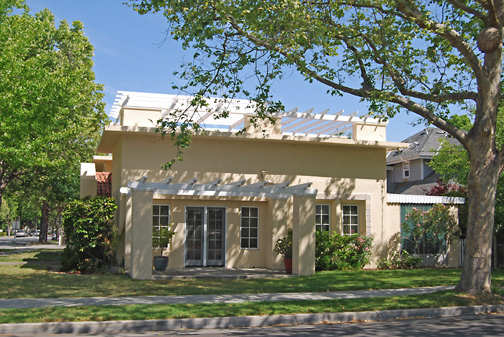 |
This concrete house was built in 1909 and is a Category 2 on the Historic Buildings Inventory. The architect was W. Garden Mitchell of San Francisco and the builder was P. W. Bosworth of the San Francisco concrete Construction Co. The property measures 140.5 by 65.9 feet.
Sources: Palo Alto City Directories; Palo Alto Times 7/16/38, 5/12/41, 7/11/57; San Francisco Bulletin, 7/1/09, 8/14/09, 8/17/09, 10/15/10, 6/1/12; Maurice M. Sloan, The Concrete House and Its Construction, (Philadelphia, Assn. of American Portland Cement manufacturers, 1912), esp. p. 18, 135, and illustrations at p. 18 and Figure 86; Book 372 (Deeds), p. 85, 8/24/10;
E-mail us at either webmaster@pastheritage.org or president@pastheritage.org.
![]() Palo Alto Stanford Heritage—Dedicated to the preservation of Palo Alto's historic buildings.
Palo Alto Stanford Heritage—Dedicated to the preservation of Palo Alto's historic buildings.
Copyright © 2019 Palo Alto Stanford Heritage. All rights reserved.